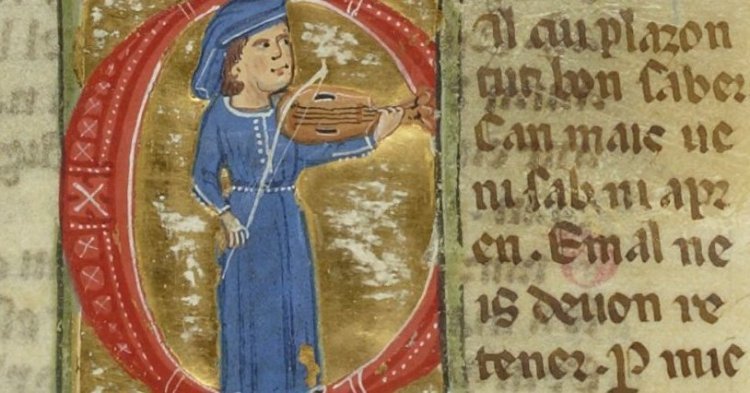Nations united in diversity?
It is true that some nation-states have developed themselves through trying to eradicate aIl regional and local idiosyncracies, with language being at the forefront of this. It was not possible to have a Breton culture, a Picard or a Corsican, but only French culture. In this vein of nationalist thinking, homogenisation is necessary for unity when not everything is the same. To be together, so it would seem, difference has to become stigmatised.
Yet, the European Union makes precisely the opposite presumption. Its motto in varietate Concordia, or « United in Diversity » means, not that we are together in spite of our differences, but that we are united because of our differences, for our differences, and thanks to our differences.
Education in regional languages is part of this philosophy. The teaching of regional languages and bilingual education using national and regional languages can serve as a powerful tool to remind us that our cultures are many and that multilingualism is now an obstacle to living together.
Why not rather develop bilingual teaching with other national languages such as French, Spanish, or German? These languages have a European and even global scope which makes them more useful than Breton, Walloon, or Auvergnese. However, bilingual teaching is still of two national languages, except in the case of states with several official languages, where one language is taught as “ours” and the other as “foreign”, even for those of the neighbouring country up the road.
The teaching of regional languages and bilingual education (national & regional) are the teaching of two languages that are “ours”, and who make up “our country”, which rests fundamentally on the idea that to be united, we must share a common language that would be the same for everybody.
Regional languages as historical and cultural heritage
Regional languages are a source of immense wealth for all humanity. The beauty of the Provençal language won the French author Frédéric Mistral the Nobel prize for Literature in 1904 for his poem Mirèiò. This great writer had the dream of reviving the language of the Troubadours, the first European literary language, aside from Latin, in the 11th and 12th centuries. The Troubadours of the Languedoc inspired the Troubadours of the langue d’oïl, from whence came the famous Christian of Troyes, and the Minnesängers from beyond the Rhine. The prestige of the Troubadours reached down into the south of Italy where the Sicilian Academy was founded, guaranteed by the Germanic emperor Frederick II, the king of Sicily. This literary trend, of which works have been written in Sicilian, is the origin of the sonnet that would make the names of Petrarch, Ronsard, Shakespeare, and later many other Romantic authors.
This is why UNESCO has developed censues and safeguarding programmes for those languages in danger of disappearing and the Council of Europe has formulated the European Charter of Regional Languages, which must be ratified as a condition for joining the European Union, a charter that has still not however been ratified by France despite government announcements.
Furthermore, languages rarely evolve in isolation, but are more often inspired by other languages that are geographically neighbours or historically and culturally related. This is the same for regional languages, with the notable exception of Basque. Regional languages can share words, expressions, and grammatical conventions with the languages of other European countries. They can thus serve as bridges between the languages of different states, as for example with Norman, a language somewhere between French and English. This is why learning, knowing, and speaking regional languages is a great asset, not only to better understand foreign languages, but also to understand the origin of their morphology, their proverbs and their syntax.
Linguistic borders do not exist.
This is why regional languages change our perception of national borders. In a Europe ruled by national logic, the crossing of a simple line through a chain of mountains or along a river corresponds to a change of language and culture as brutal as it is artificial. Regional languages and cultures help make us aware of this.
When we go through the regions and countries of our continent, the passing from one language to another happens in a much more gradated manner, and it is very difficult to delineate a language with precise contours. The language of a region penetrates those of its neighbouring provinces, its influence becoming more significant, to the point that some dialects are considered transitional between two languages, such as Royasque, which lies somewhere between Provençal and Ligurian (Genoa). Thus, if languages were to be turned into colours, a Europe of the regions would be filled with gradients between different colours which are interacting and mixing with one another. As such, the learning and practice of regional languages should not be done with a regretful view of the past, but be seen as a window onto the world and the future.
One language, one way of thinking
The challenge is not only cultural, but also at the level of fundamental liberties, including the freedom of expression and of opinion. If word express thoughts, the works of the linguist Ferdinand de Saussure demonstrate that in the first instance, words form thoughts: without words, there are no ideas! Orwell’s principle of Newspeak is that, to progressively remove words in order to delete all dissenting opinions. The legal requirement for only French to be used in daily life by the public authorities during the Third Republic did not only have a nationalist objective. The starting assumption was that French was the language of the Enlightenment and of freedom in contrast to other European languages, those which were still shackled by the ideologies of the Ancien Regime. The will of the state was to impose a single language to restrict and regulate a homogenous way of thinking, so as to stop us questioning the merits of the gains of the Revolution which formed the basis of the new Republic established in 1870. This method inspired the USSR which imposed Russian as the sole language to be used in public life.
Promoting the learning and use of regional languages is to favour diversity of opinion, their free expression, and the meeting of the different representations of the world embodied in these languages, helping to foster cultural enrichment for all and therefore unity.


Follow the comments: |
|
